Health
Myositis Ossificans
Posted on July 11, 2018 by admin
Myositis ossificans is when bone tissue forms within a muscle. It is usually found in the thigh muscles where the hamstring and quadricep muscles are found. Myositis ossificans can develop when a contusion (bruise), repetitive trauma, or strain occurs to a muscle. Calcification and bony formation can occur in the injured muscle when a repetitive trauma occurs before the injured area has been completely recovered. Therefore, it is important to rest the muscle after an injury. To prevent a repetitive trauma from happening, one can use protective padding and perform stretches to avoid muscle strain. Intensive stretching and massage should be avoided because it inhibits healing and increases bleeding into the muscle. Myositis ossificans can also occur if the inflammation and swelling of the muscle is ignored after an injury.
Moreover, myositis ossificans can lead to swelling, pain when exercising, limited range of motion, a weaker limb, and a hard bump. However, it can be treated by resting the muscle, strengthening the injured muscle and the muscles around it, and working on flexibility and light stretching. In addition, ultrasound can also help with the healing process.
Bursitis
Posted on July 4, 2018 by admin
Bursae are small, fluid-filled sacs that act as a cushion for the bones, tendons, and muscles around the joints. When they become inflamed, it is known as bursitis. Bursitis can occur in the shoulder, hip, elbow, and knee. Repetitive movements or positions that can apply pressure on the bursae, such as lifting something over your head repeatedly or kneeling on your knees for a long time can lead to bursitis. Inflammatory arthritis, an injury or a trauma can also cause bursitis. Someone who has bursitis will notice their joint becoming red and swollen. In addition, the joint will feel achy or stiff and they will feel pain when they try moving the joint or when they apply pressure to it.
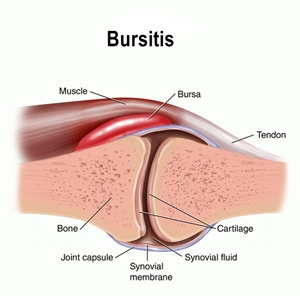
Older adults, overweight individuals, and individuals with rheumatoid arthritis have a higher risk of developing bursitis. However, one can reduce their risk by warming up and stretching before exercising, strengthening their muscles, lifting properly, carrying lighter loads, and taking breaks after performing repetitive movements. Rest, ice, and exercises can help relieve the pain. A corticosteroid drug can be injected into the bursa to reduce pain and inflammation. The pain will disappear within a few weeks if it is treated properly.
Osteoporosis
Posted on June 27, 2018 by admin
Osteoporosis is when your bones become thin and brittle. It is caused by a lack of bone strength or bone density. Similar to a sponge, your bones contain numerous holes which makes it fragile and can lead to hip, spine, or wrist fractures. This disease is usually found in older adults after age 60 and women are more likely to have osteoporosis than men. The risk of getting osteoporosis increases as we age and a woman who has gone through menopause has a greater risk. Other risk factors include a slender body, family history, people of European and Asian background, smoking, alcoholics, not getting enough weight-bearing exercises, and a lack of calcium and vitamin D intake.
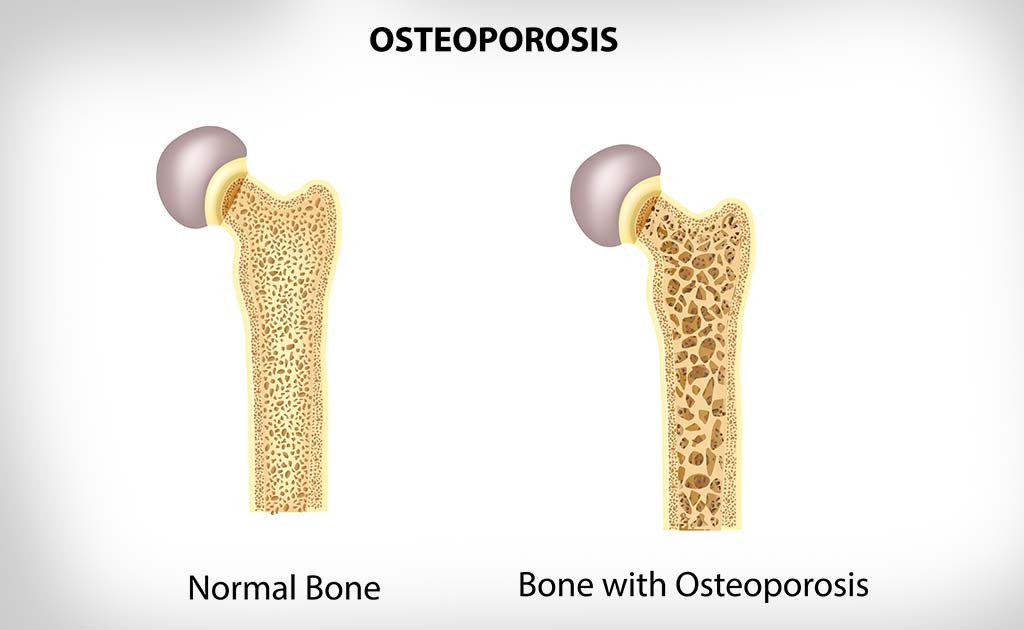
The first sign of osteoporosis is usually seen after a fall or bump where a fracture is found in their hip, spine, or wrist. They would later on experience back pain, notice their height has shrunk, and notice a curved backbone.
A bone density test can be completed to measure the thickness of your bones and the risk for a fracture. Calcium and vitamin D is essential to building strong, healthy bones. In addition, exercising and quitting smoking can help slow osteoporosis. In order to avoid bone fractures from occurring, it is important to get a bone density test and get osteoporosis treated early.
Achilles Tendon Rupture
Posted on May 22, 2018 by admin
The Achilles tendon connects the muscles from the calf to the heel bone. It assists us with pointing our foot towards the ground, rising on our toes, and it allows us to push off our foot when we walk. A rupture can be caused when there is a sudden increase in training intensity. Sports that involve jumping, running, and sudden starts and stops can lead to injuries to the Achilles tendon.
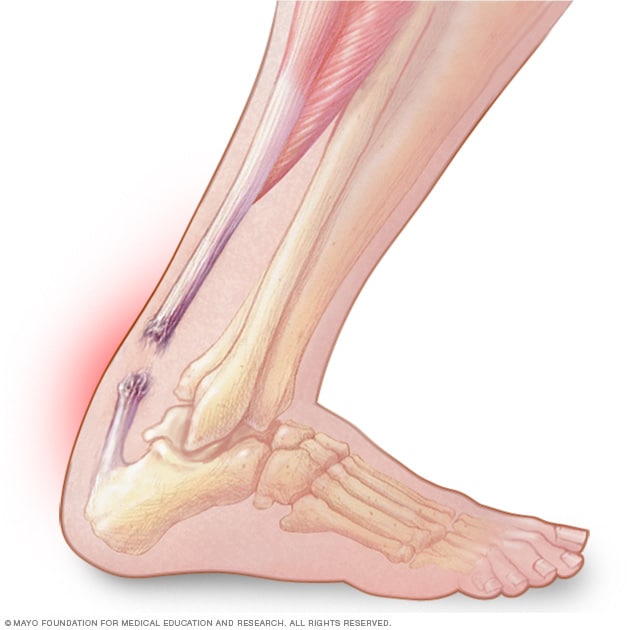
Majority of the people describe Achilles tendon rupture as a feeling of being kicked in the calf. When the injury happens, a popping or a snapping sound can be heard. Due to the pain at the back of the ankle and lower leg, the rupture can affect the injured person from walking normally. In order to prevent Achilles tendon injuries, one can increase their intensity of training slowly, perform exercises that strengthens the calf, and avoid running on hard surfaces. If a rupture occurs, surgery or nonsurgical treatments can be used to repair the Achilles tendon.
Feeling anxious?
Posted on December 19, 2017 by admin
Feeling anxious? It isn’t always a wonderful sensation to be feeling. Although anxiety is condition that affects mental health, it should still be cautiously looked over because it could lead to depression, creating a higher chance for committing suicide. These steps can be avoided if we take more interest in others who may seem to be showing these qualities.

One way to ease stress is to write down your worries as it may relieve some “thoughts” from your mind, reducing the amount of worrying that occurs in your brain. This does not benefit from everyone who have anxiety as this is only found from studies that writing thoughts down can help. There has also been other studies regarding probiotics to help with depression and anxiety, however the conclusions are still unknown but there is no harm in taking them as they are beneficial for your gastrointestinal system.
Trying to help someone with their anxiety or depression requires more effort and time than you would expect, as there is something referred as “postpartum depression“. There could always be moments where the person can go back to their anxious lifestyle even if they had been treated for their anxiety. If you knew someone who has anxiety or depression, please show care for them as it is a long process for them to handle and knowing others in their life show that they care, can really help someone overcome depression and anxiety.
Shoveling and Low Back Pain
Posted on December 8, 2017 by admin
December is approaching and snowy weathers could be coming your way! With every snowfall, comes with shoveling and keeping your street free from snow turning into ice and avoiding others to fall on the street. If you are helping others preventing injuries, shouldn’t you be taking care of yourself as well?
Shoveling can put a lot of strain on your back muscles so you may need to take caution of how much stress you are actually applying to these muscles. Here are 4 tips you can follow to reduce your chances of injuring your lower back.
- Warm up your muscles first. Try to do some stretches as warming up your muscles can be less susceptible to injury.
- The method you use to shovel. Bending at the knees and hips and using your leg muscles instead of your back, it can relieve stress off your back muscles and reduces risks of straining them.
- If you are already experiencing low back pain, avoid the job. Try and see if it’s possible to find another volunteer, who doesn’t have back pain, to shovel the snow.
- Use a different shovel. Try a shovel with a curved handle which provides you with an upright stance with adjustable length.
Try and experiment with these tips and your back muscles will definitely thank you!
Tips on Preventing Falls
Posted on November 13, 2017 by admin
As leaves are falling and rainy weathers are coming to Vancouver, these factors can become a hazard and lead to slipping and falling. Here are tips on how to prevent or reduce your chances of falling this autumn and winter!
First of all, if you wear reading glasses frequently, make sure they are off when you are walking down the stairs or along the slippery street. The shoes you are wearing are important since some footwear are more prone to falling. If heels are not required for your work attire, then try to avoid wearing them as much as possible especially during wet and rainy weathers. Physical activity in general is important as it keeps your muscle moving and maintaining strength which is important for reducing the chances of falling since your muscles can provide more support. If you are at home, try your best to avoid leaving items on the ground and making sure the floor is dry to prevent slipping and injuring yourself. When possible, watch out for assertive devices such as rails on the stairs, or carry a flashlight to help reduce the risks of slipping while travelling.
There are many other tips to follow other than the ones listed above but the main concept to remember is to stay safe and be careful.
Tips on Sleep and Low Back Pain
Posted on October 30, 2017 by admin
Do you wake up often feeling low back pain? The solution could be the way you sleep at night. What could you do to help prevent that? Continue reading for some tips to help reduce your chances of having low back pain when you wake up in the morning.

The way you sleep can affect how stiff your muscles can be. If you are a side sleeper, you can try slipping a pillow between your legs to help align the spine a bit better. If you are a back sleeper, if possible, try to slip a pillow under your knee to maintain the neutral spine curvature. If you sleep on your stomach, you can put a pillow between the bed and your abdominal to help level out the stress places on your neck.
Picking a mattress could be a solution to your problem. Your mattress should provide some support for your back or else it might be time to switch for another one. Choosing the correct pillow can help reduce your likelihood of experiencing back pain. An ideal pillow should be able to support your head, neck, and shoulders to prevent so much pressure building up on them.
If you are still unsure, you can drop in and see a chiropractor to get treatment for your low back pain and get more tips on a better sleep lifestyle!
Yoga and Inflammation?
Posted on October 23, 2017 by admin
Yoga has been known to help with your stress, however did you know it is beneficial for slowing down inflammation?
By practicing yoga, it has been shown that it increases levels of leptin and adiponectin. These two can help alleviate inflammation occurring in your body. A study has been done and researches discovered that 12 weeks of yoga could slow down cellular aging. They also found that the individuals had lower levels of inflammation and cortisol and higher levels of brain derived neurotrophic factor, which is a protein that helps with brain development.
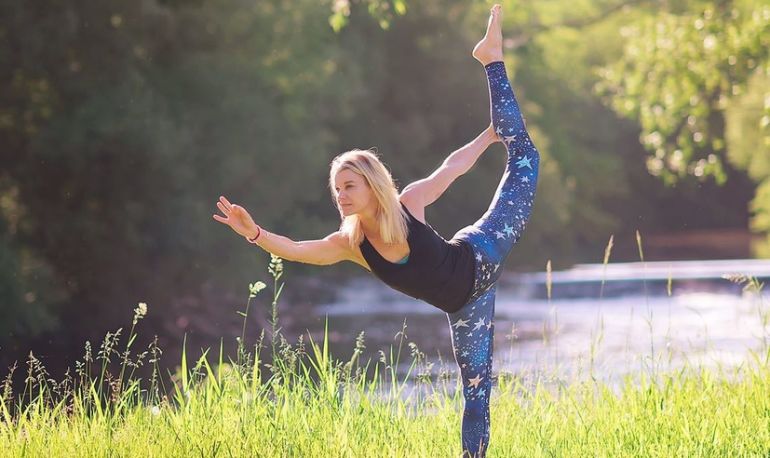
Many of us should try out yoga once in a while as there are benefits in doing so. It does not require a lot of time so it can be input into your day in the morning or before you head to bed. One example you can try at home is alternate nose breathing.
Overall, there is no harm in experiencing yoga and slowly incorporating this into your daily life as many of us tend to get stressed easily and this can become a go-to stress reliever!
Knee Osteoarthritis
Posted on October 2, 2017 by admin
Do you sometimes experience pain or stiffness in your knees? Have you heard of knee osteoarthritis before? If so, how will you know the pain in your knee is due to this condition or is related to something else?
As mentioned in a previous blog, osteoarthritis is a tear and wear occurring in the cartilage. Knee osteoarthritis is defined as a tear or wear that is located in the cartilage and/or joints in the knee. Some symptoms you may experience if you have knee osteoarthritis are pain, stiffness, swelling, and possibly a grinding sensation during knee movement. Presently, there is no cure for osteoarthritis but there are methods you can do to reduce pain or stiffness.
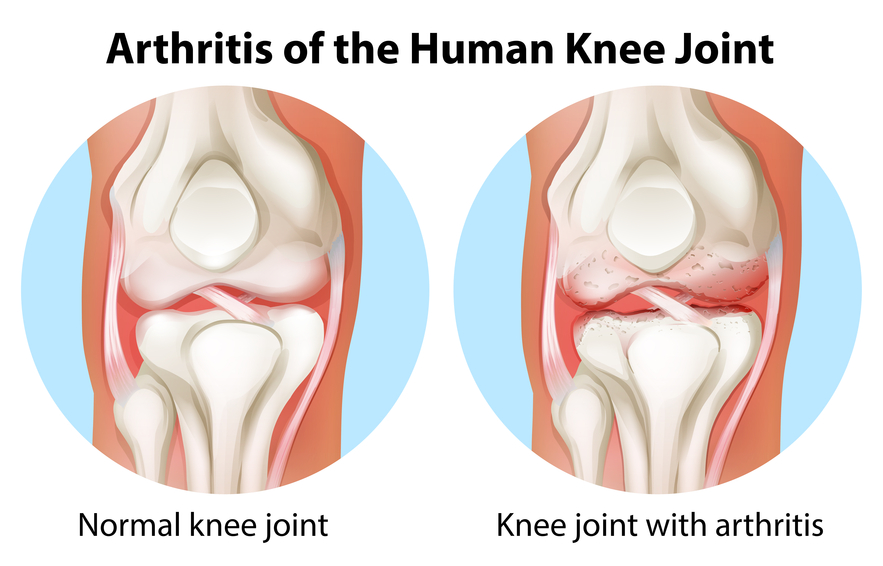
There are 5 stages for knee osteoarthritis:
- Stage 0: This stage is the “normal” condition where the knee is not inflamed and neither pain or impairment is occurring
- Stage 1: There is minor bone spur growth occurring but usually discomfort or pain is not felt during this stage
- Stage 2: Bone spur is still happening and is considered as a mild stage of this condition but cartilage is still considered “healthy” as this stage
- Stage 3: This stage is classified as the “moderate” stage/condition. The space between the two bones have been decreased and individuals will likely experience stiffness, pain, and/or discomfort. Swelling can also occur at this stage
- Stage 4: During this stage, a lot of pain and discomfort can be felt since the cartilage between the two bones is greatly reduced and is practically almost gone

If you believe you may be experiencing knee osteoarthritis, come see a practitioner here or to your general physician to see what can be done to reduce your pain!